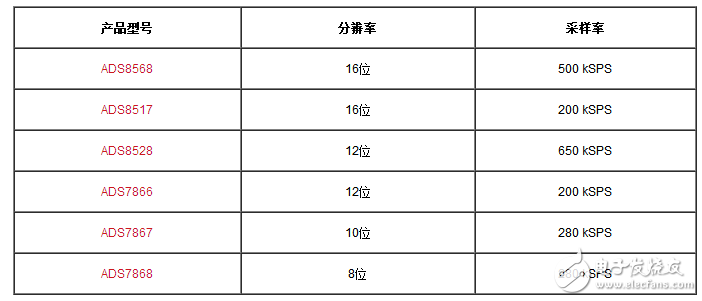Did you know that the input signal may affect how you choose the best successive approximation register (SAR) analog-to-digital converter (ADC) for your application?
When we hear the word "input", there are a few things that immediately jump into our minds, such as frequency, amplitude, sine wave, sawtooth wave, etc. When optimizing signal conditioning, all of these are related issues. .
However, one thing that many people fail to anticipate is the type of actual input to the SAR ADC. In this blog, I will focus on three types of SAR inputs: single-ended, pseudo-differential, and differential inputs, and how to use them in your application. In future blogs, I will discuss the performance differences that must be remembered and some key practical considerations to get the best input performance.
Single-ended input SAR ADC
Single-ended inputs are the simplest of the three input types because the ADC has only one input. As long as the signal is within the range specified by the input pins, the SAR digitizes the input relative to the SAR ground (see Figure 1).

Figure 1: Single-ended conversion example
While most single-ended SAR ADCs can handle unipolar signals, some single-ended SAR ADC designs can handle bipolar signals whose amplitude (A) easily exceeds the power supply. Some support single channels, while others can support multiple channels. A common application for using single-ended ADC inputs is supply voltage monitoring.
The following is some additional information about the single-ended input SAR ADC used in Figure 1:

Pseudo differential input SAR ADC
A pseudo differential SAR ADC has two input pins; however, since the correct ADC conversion occurs when one input is held at a fixed DC voltage (usually REF/2) and the other input can accept a dynamically changing input signal It is called "pseudo-differential". The differential signal between the two inputs (AINP-AINM) is then converted to a digital code. Typically, a +/-100mV reserve is provided for the input variables. Figure 2 illustrates this and a unique case where the fixed input (AINM) is connected to the signal ground to make it similar to a single-ended input.

Figure 2: Pseudo Differential Input Configuration
One of the most common applications with this configuration is shunt monitoring, in which not only the voltage on the side of the series resistor can be measured for a fixed DC voltage, but it can also be converted back to current.
An example of a pseudo differential input SAR ADC used in Figure 2:

Fully differential input SAR ADC
The fully differential input SAR ADC accepts two inputs, one of which is complementary to the other (see Figure 3). The differential signal between the two inputs (VDIFF = AINP - AINM) is converted.
In most differential input SARs, there is a limit to the common-mode voltage of the ADC input (VCM = (AINP + AINM) / 2), which means that the two signals have a fixed DC offset (usually REF/2 with a tolerance of + -100mV).
However, as shown in Figure 3, there are some new SAR ADCs with a single input stage that can handle common-mode voltages that vary from 0 to REF. This type of input is called a true differential input.

Figure 3: Fully Differential Input Configuration
Fully differential SAR ADCs support bipolar inputs and/or multiple channels, similar to single-ended SAR ADCs. Applications that use transformer outputs use fully differential input SAR.
The following is more information on the fully differential input SAR ADC used in Figure 3:

Spring Clamp Terminal Block,Spring Terminal Connector,Spring Loaded Terminal Blocks,Spring Cage Terminal Block
Cixi Xinke Electronic Technology Co., Ltd. , https://www.cxxinke.com